Underwater Volcanoes
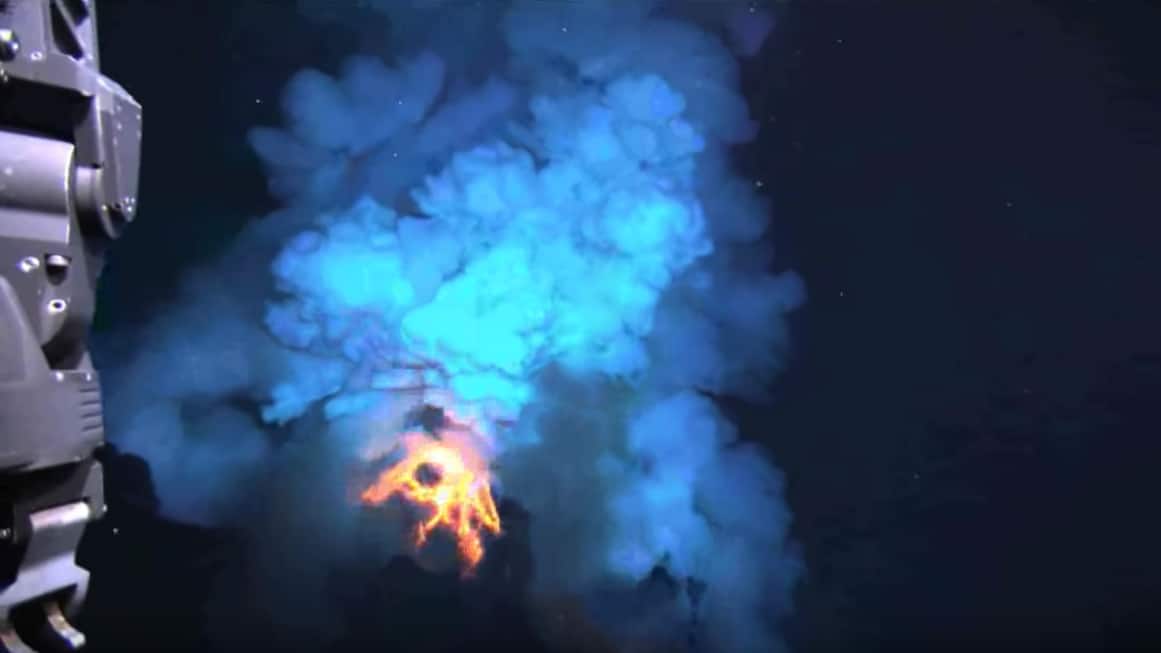
An underwater volcano eruption in West Mata, captured in 2009 by WHOI’s autonomous underwater vehicle Jason in 2009.
What are volcanoes?
These iconic geologic features act as pressure valves for the planet by periodically releasing heat and molten rock from beneath the surface. While most people think of volcanoes as high, conical peaks jutting into the sky, most are in fact hidden on the seafloor, clustered in chains of seamounts, or spread along the mid-ocean ridges—where volcanic activity is greatest. They come in many other forms, as well, from chimney-like conduits that explode with lava, ash, and vapor to complex systems of cracks that spew lava at the Earth’s surface. In addition to their well-known destructive power, volcanoes are also a significant generator of new planetary crust as well as a conduit for trace elements and other materials to cycle back to the surface from the interior of the planet.
Where do volcanoes form?
Volcanoes occur in many different parts of the world and in many different geologic settings. Most large or explosive volcanoes are found on or near subduction zones—places where one of Earth’s massive tectonic plate dives beneath, or subducts, beneath another. However, the most active volcanic activity is found along ocean ridges, places where tectonic plates are pulling apart and lava wells up from beneath the surface to fill the gaps. Many large volcanoes are also associated with mid-plate “hotspots”: huge plumes of hot mantle rock that can extend hundreds of kilometers into the depths of Earth’s mantle.
Subduction zones
Volcanoes rim the Pacific Ocean along the so-called Ring of Fire. These cones and their behavior are typical of subduction zones. Rocks carried beneath the surface often contain water in their mineral structure. When they melt, their more volatile components trickle up from below the overriding tectonic plate feeding the growth of a volcano usually through a central shaft or chimney-like conduit. The resulting layers of lava build over time to form a structure known as a shield. Such shield volcanoes are typical of the Cascades Range in the US Pacific Northwest and Japan.
Less explosive volcanoes produce effusive, or continuous, eruptions like those in some of the Hawaiian Islands’ active cones. Known as shield volcanoes for their distinctive shape, Hawaii’s land-based and underwater volcanoes send molten rock from cracks in their flanks flowing in sheets down their slopes. This material cools into many different forms, including pahoehoe (ropy lava) or aa (rough and rocky) at the surface. Underwater, lava cools rapidly into pillow lava, round and bulbous, where the inner rock remains hot inside a cooled orb-like crust, erupting into chains of connected “pillows.” These and other volcanic rock types are called igneous rocks.
Spreading centers
Volcanoes also occur at spreading centers, places on the planet where tectonic plates move away from one another and magma rises up to fill in the gaps. The Icelandic volcano Eyjafjallajökull that erupted explosively on April 14, 2010, for example, straddles the Mid-Atlantic Ridge at one of the few places on Earth where a spreading center occurs on land. The eruption spewed clouds of ash and gas, creating a plume that eventually rose up several miles into the atmosphere.
Geologists in Iceland had some warning that Eyjafjallajökull may have been ramping up for an explosive event in December 2009, when swarms of tiny earthquakes shook the volcano. The tiny tremors were a signal that magma was rising into the cracks and crevices of the earth’s crust, and volcanologists began tracking the volcano’s activity with ground-penetrating radar and other methods. Today geologists keep close watch on many active volcanoes around the world for signs of eruptions that could threaten people near and far.
What determines how violently volcanoes erupt?
The chemical composition of magma, water content, internal pressure and other characteristics can influence how violently a volcano erupts. Chemical signatures in cooled lava can also describe the composition of Earth’s interior at the time of an eruption that can help geologists understand Earth’s inner workings and distant past.
Why are volcanoes important?
The many hazards that volcanoes present—from unexpected explosions and landslides to long-term climate disruptions—make them well worth watching. The ruins of Pompeii, Italy are a graphic reminder of the hazards associated with living on or near one of the many volcanoes (active or seemingly dormant) worldwide. Nearly 1,700 years ago, people and animals living in Pompeii were almost instantaneously entombed in ash from Mt. Vesuvius. More recently, Mt. St. Helens in Washington State erupted in 1980, ripping more than 1,300 feet off the top of the mountain and causing an estimated $1.1 billion in economic damages, from deaths and injuries to destroyed bridges to lost crops.
Even seemingly inactive or dormant volcanoes may prove unexpectedly hazardous: the Mammoth Lakes region of California is home to the Long Valley caldera, which began to seep carbon dioxide and helium through cracks in the ground in the mid-1990s. The gases killed large numbers of trees in the area, and may have been responsible for some human health problems and several deaths.
Short- and Long-term Risks
The greatest hazards associated with volcanic eruptions are lahars and pyroclastic flows. Both are super-heated mixtures of water, gas, dust, and rock that cascade down mountainsides and river valleys and around obstacles, burying or incinerating virtually anything in their path. They often move quickly—faster than a person can run—and can bury large areas extending for miles from the foot of a volcano under hundreds of feet of material.
Volcanic eruptions can have global reach, as well. In addition to killing some 40,000 people nearby, the August 1883 eruption of Mt. Krakatau (Krakatoa) sent aerosols and particulate matter high into the atmosphere and around the globe, cooling the planet by as much as 0.3°C for a year. On an even larger scale, massive sheets of lava deposits, called flood basalts, have spread across continents. The Deccan traps, for example, cover 500,000 square km (nearly 200,000 square miles) of India. This massive volcanic outpouring more than 60 million years ago has been tied to long-term, planet-wide atmospheric changes to the point that geologists have hypothesized that the lava and accompanying gases might have contributed to the extinction of the dinosaurs in the late Cretaceous period.
When Iceland’s Eyjafjallajökull erupted in April 2010, the plume of ash that it ejected into the atmosphere threatened planes flying over Europe and the North Atlantic. Authorities stopped flights several times in following months, stranding travelers and costing the airlines and other businesses millions of dollars. Eruptions such as this can inject millions of tons of particulate matter or tiny pieces of ash and glass into the air, along with gases like water vapor, carbon dioxide, and sulfur dioxide. Although it is still too early to tell how extensively these emissions will affect global climate, they have resulted in stunning, color-saturated sunsets around the world.
Volcanic eruptions can also trigger massive landslides that, if they slide into the water or occur beneath the ocean surface, can cause tsunamis. The eruption of Mt. Krakatau generated a tsunami that was felt as far away as South Africa. In addition, a failure of the unstable slopes of La Palma, a part of the Canary Islands, is often cited as a potential tsunami threat to the east coast of North America and west coast of Europe.
Benefits
Living with volcanoes and volcanic activity nearby is clearly risky, but it can also hold great benefit. The physical breakdown of volcanic rocks, known as weathering, has produced some of the most fertile soils on Earth. Some of the earliest human civilizations settled on the rich, fertile volcanic soils around the Mediterranean and Aegean Seas. Today, some of the best rice-growing regions of Japan and Indonesia are in the shadow of active volcanoes. In Hawaii, the weathering action of heavy rains can produce fertile soil from new lava flows, resulting in the re-growth of vegetation as soon as a few decades after an eruption. Statewide, Hawaii’s rich volcanic soil helps support an agricultural industry worth more than $500 million per year.
News & Insights
Spock versus the volcano
Five hundred meters below the calm surface waters of the Aegean Sea off Santorini Island, Greece, lies an active submarine volcano. There, a decision-making robot equipped with artificial intelligence searches for life and danger.
News Releases
Arc volcanoes are wetter than previously thought, with scientific and economic implications
“Mantle wind” blows through slab window beneath Panama
New geochemical tool reveals origin of Earth’s nitrogen
A Close-up Look at a Rare Underwater Eruption
Volcanic Arcs Form by Deep Melting of Rock Mixtures
[ ALL ]
WHOI in the News
Crystals may help reveal hidden Kilauea Volcano behavior
Where Does The Nitrogen We Breathe Come From?
Volcano space robots are prepping for a wild mission to Jupiter
World-first probe into an active submarine volcano
[ ALL ]
From Oceanus Magazine
How did the ocean remain so quiet during Tonga’s eruption?
Underwater acoustics expert Gil Averbuch teases apart a mystery
Spock versus the volcano
Five hundred meters below the calm surface waters of the Aegean Sea off Santorini Island, Greece, lies an active submarine volcano. There, a decision-making robot equipped with artificial intelligence searches for life and danger.
ROV Jason Images the Discovery of the Deepest Explosive Eruption on the Sea Floor
<!–
–>
West […]


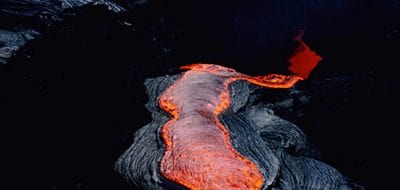
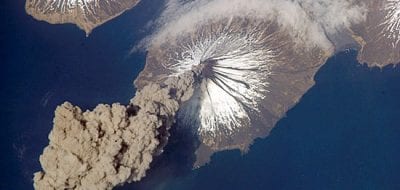

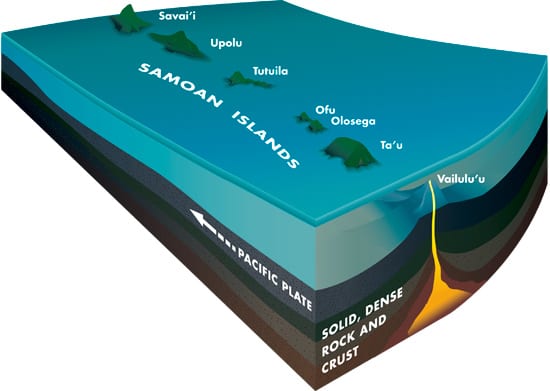
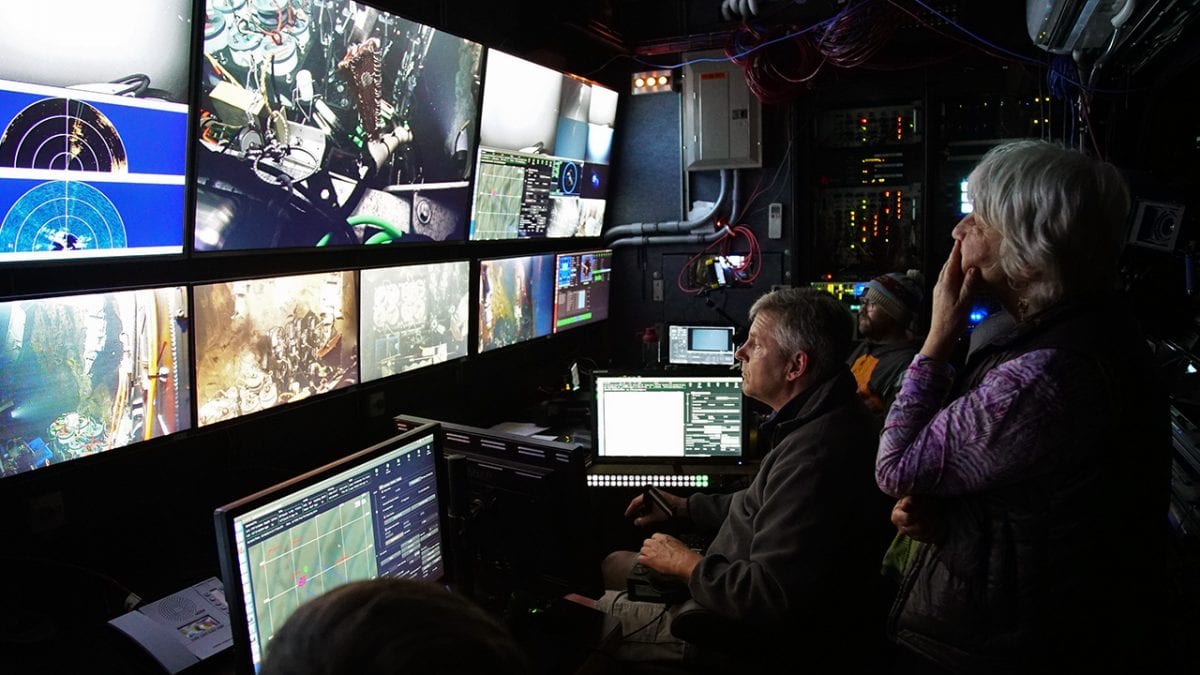
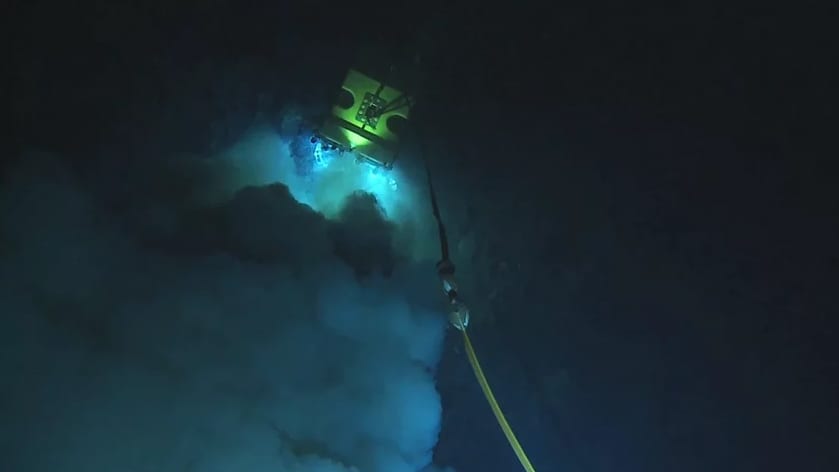
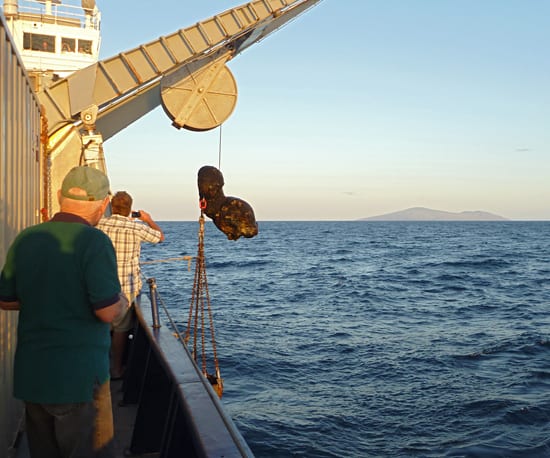
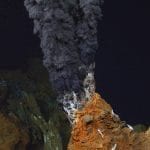 Hydrothermal Vents
Hydrothermal Vents 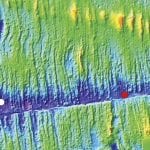 Mid-ocean Ridges
Mid-ocean Ridges 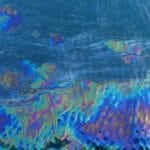 Natural Oil Seeps
Natural Oil Seeps 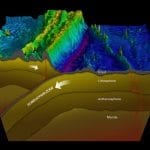 Ocean Trenches
Ocean Trenches 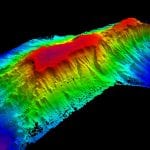 Seamounts
Seamounts